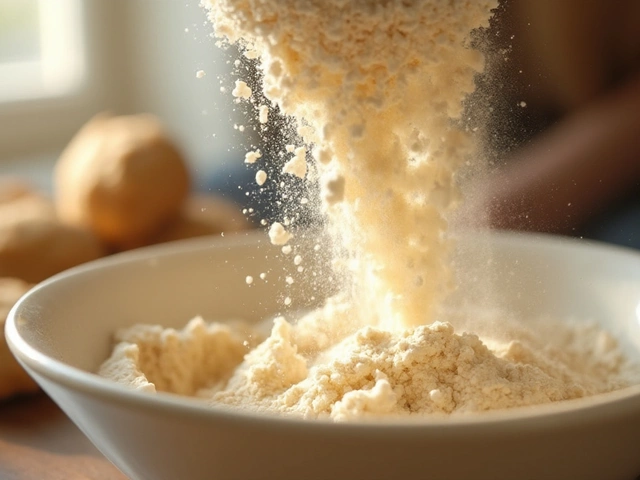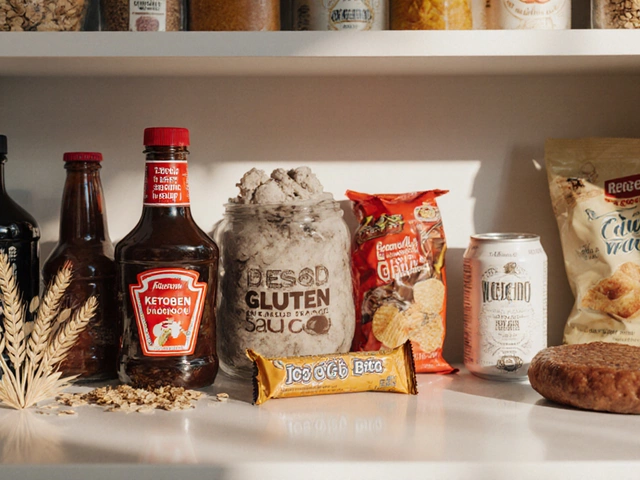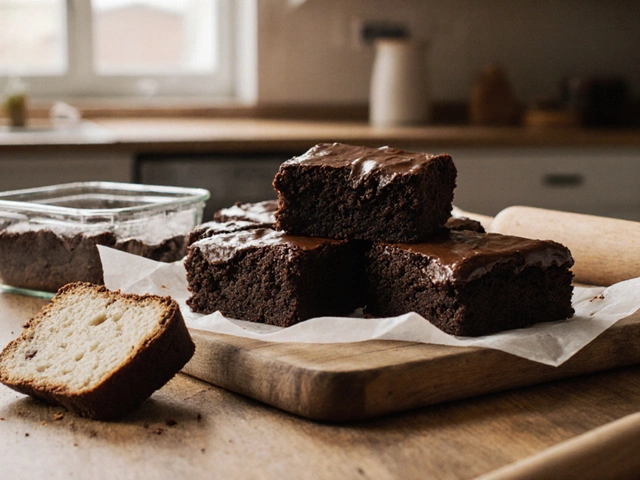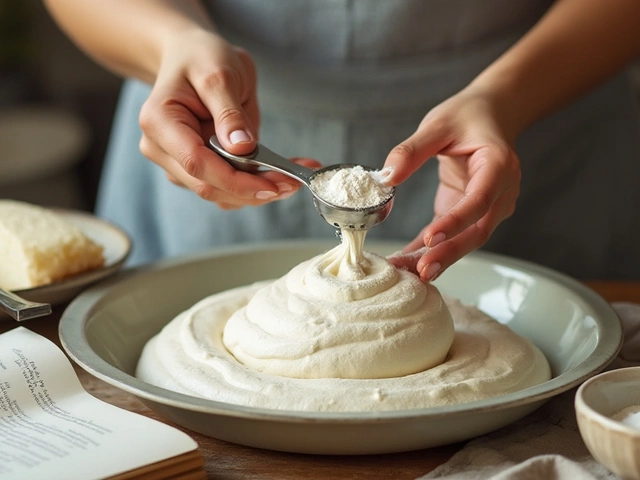
Imagine pulling a golden, sweet-smelling gluten-free cake out of the oven—only to watch it collapse into a crater as it cools. The disappointment is real, and honestly, you’re not alone. Gluten-free cakes have a reputation for sinking smack in the middle, turning baking dreams into frustration. What’s behind this recurring kitchen tragedy? The reasons go way deeper than just swapping out regular flour. If you’ve ever wondered why your lovingly-prepped gluten-free cakes droop instead of dazzle, you’ve hit the motherlode of practical baking know-how. Let’s unravel this sunken mystery together, so you can get that perfect, proud dome every time.
The Science Behind a Sunken Center
First, let’s get nerdy for a moment—but promise, I’ll keep it fun. Cake structure depends on the interplay of starch, proteins, fats, and a whole lot of steam. Traditional wheat flour gives cake batter a hidden secret weapon: gluten. Gluten forms an invisible net that holds everything up as your cake puffs in the oven, trapping bubbles for that airy, even crumb. Gluten is literally like scaffolding for your cake.
Now, picture what happens when you take gluten out of the equation. Suddenly, your batter doesn’t have the same structure. Most gluten-free flours—think rice, almond, or sorghum—are missing that stretchy, elastic protein. Instead, they just sit there. The cake rises in the heat because of steam and expanding gases from baking powder, but with nothing to support that expansion, the middle caves in as it cools. That’s the classic gluten-free sinkhole.
Temperature swings can make things worse. Crank your oven too soon or too high, and the cake might puff up fast and furious—only to collapse later, like a soufflé after a clap of thunder. On the flip side, if you open the oven door mid-bake for a peek (tempting, I know), cold air floods in and your delicate rise collapses. According to a 2023 survey by the Gluten Intolerance Group, over 52% of bakers reported sunken gluten-free cakes as a frequent headache, with most blaming flour blends, not technique. But here’s the kicker—most flour blends do work, if you use the right helpers.
So, what makes a gluten-free cake hang together? It’s not magic—it’s binders like xanthan gum, guar gum, psyllium husk, or even ground chia seeds. These act like gluten’s “stand-in,” helping your cake hold shape. Without them, it’s gravity’s game to win.
Common Mistakes Bakers Make
It’s easy to slip up when baking gluten-free, especially if you try to mimic regular cake recipes one-for-one. Trust me, I’ve dumped more than my share of sunken cakes into the compost bin. The good news? Most mistakes are totally fixable once you know what’s tripping you up.
The big one: too much leavening. Gluten-free flours don’t absorb liquids or trap air like wheat does. If you go overboard with baking powder or baking soda, the batter inflates too fast, and without gluten’s support, it collapses spectacularly. The result: a volcano-like crater in the center. A good rule of thumb? Reduce total leavening by 25% from a standard recipe if adapting a wheat-based cake to gluten-free.
Another culprit is overmixing or undermixing. Stir too long, and you introduce extra air—and that air has nowhere to go but down when the structure can’t hold it up. But undermix, and you’ll get clumps of flour that weigh down parts of the cake, causing uneven rising and, you guessed it, a sunken middle.
Humidity isn’t your friend either. Gluten-free flours love to soak up moisture from the air, so if your kitchen is sticky, the cake might turn gummy then collapse as it cools. Weigh your dry ingredients for accuracy, and store flours in airtight containers to keep them consistent year-round.
Even pan choice matters. Ever baked a thick gluten-free cake in a small, tall pan? Tall cakes have a harder time setting up in the center before the outside is already done baking, so try a wider, shallow pan if your cakes keep dipping. Oh, and always check that your baking powder and soda are super fresh—expired leaveners won’t give you the right lift.
Take a peek at this quick data snapshot from the Celiac Disease Foundation’s home baking report (2024), breaking down top mistakes and their frequency among home bakers:
| Baking Mistake | Percentage of Gluten-Free Bakers Affected |
|---|---|
| Too much leavening | 41% |
| No binders used | 34% |
| Opening oven door while baking | 29% |
| Wrong pan size | 22% |
| Undermixing/overmixing | 17% |
| Stale baking powder/soda | 13% |
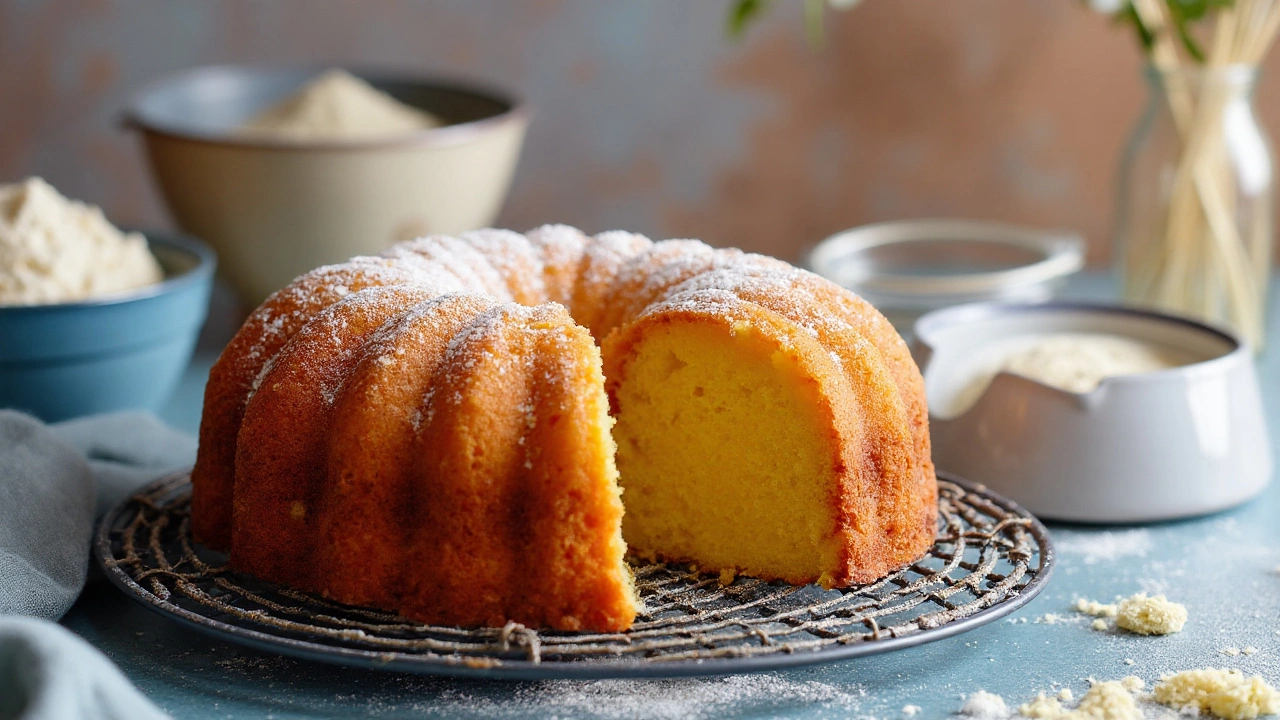
Smart Solutions for a Flawless Gluten-Free Cake
Let’s talk fixes—because nobody has time for lopsided desserts. The cornerstone of a sturdy gluten-free cake is the right mix of flours and binders. A blend of light starches (like potato or tapioca) and base flours (such as brown rice or sorghum) helps mimic wheat’s all-purpose structure. Don’t guess: commercial gluten-free blends usually contain both, but double-check the label. If it doesn’t include a binder like xanthan or guar gum, add ½ teaspoon per cup of flour. For more natural options, psyllium husk, ground chia, or flaxseed can give the same oomph—mix thoroughly with the dry ingredients before wet stuff goes in.
Next up, nail your liquid ratios. Gluten-free flours soak up way more liquid than wheat flour. If your batter is runny, it won’t set right and will collapse. Batter should be thick enough to sit on a spoon, not pour off like pancake mix. When developing new recipes, start with ¼ cup less liquid than a wheat-based recipe might use, and add more only if the batter is too dry.
Bake low and slow. A lower oven temperature (say, 325°F instead of 350°F) lets the cake cook evenly inside without over-browning the outside. This gives the structure time to set before the cake puffs up too high and caves in.
Invest in an oven thermometer. Many ovens run hot or cold—a rogue 20 degrees can mean the difference between cake heaven and cake heartbreak. Always place your cake center-rack for even heat.
And while it sounds annoying, be patient. Don’t open the oven door for at least the first two-thirds of the baking time. The delicate lift in gluten-free cakes is super sensitive to drafts or sudden changes in temp. When you do finally check, test for doneness with a toothpick poked dead-center; if it comes out clean or with a few crumbs (not wet batter), you’re golden.
Here are some pro tips that’ll boost your gluten-free cake game:
- Let your batter rest for 10–15 minutes before baking. This gives starches time to hydrate, resulting in a sturdier crumb.
- Use room temperature eggs, milk, and butter. Cold ingredients can shock the batter, causing uneven baking.
- Try adding a tablespoon of sour cream, yogurt, or applesauce to your mixture. These help retain moisture and prevent dryness, which can also encourage collapse.
- Weight > volume: Weigh your dry ingredients for best results—a little goes a long way in gluten-free baking, and a kitchen scale is the surest way to avoid excess.
Did you know? According to a 2025 survey from the National Baking Institute, gluten-free cakes with added binders and balanced hydration had a 63% higher success rate on structure than those baked without. That’s too big a difference to ignore.
Gluten-Free Cake Baking Myths Busted
There’s a lot of bad baking advice out there—especially about gluten-free cakes. You’ve probably heard someone swear their cakes sink because of old baking soda, or that you have to use expensive specialty flours. But most of these myths miss the real picture.
Myth: “You can swap in gluten-free flour, cup for cup, and nothing changes.” Not true. Most conventional recipes aren’t built for gluten-free’s thirstier, denser ingredients. Flours vary a ton—almond flour sucks up way more oil than rice flour, and coconut flour is notorious for drying out and collapsing baked goods. Always adjust liquids, and don’t wing it. If in doubt, use recipes written specifically for gluten-free baking.
Myth: “Adding more eggs will fix a sinking cake.” Kind of, but not always. Eggs are important for structure, but too many make cakes rubbery or lead to an eggy aftertaste. Stick with the recipe, and only tweak if you know what you’re after.
Myth: “You can’t get a tall, fluffy gluten-free cake.” That’s just defeatist. Some of the world’s fluffiest cakes—like Japanese cotton cheesecake (which is naturally gluten-free)—get their lift from careful whipping, balanced flours, and the right binders. It’s all about understanding ingredients so you can play to their strengths.
Myth: “All gluten-free flour blends are the same.” Not even close. Some are base-heavy, some are starch-heavy, some have binders built in, and some don’t. Always read the label and watch out for those with excessive starch, as they tend to weigh cakes down. And remember, homemade blends let you control every detail—if you’re up for the extra effort, experiment to make a mix that works for your favorite recipes.
Want to go the extra mile? Keep notes on every cake for a couple of weeks. Jot down which blend you used, the oven temp, how long you baked, and if you used a binder. Soon you’ll crack the code for your own kitchen, humidity, and taste buds. Baking is part science, part magic, and mostly about persistence. Once you nail that first gluten-free cake with a perfectly domed top, you’ll want to dance around your kitchen, trust me. The crumble, the scent, the bragging rights—all worth it.


